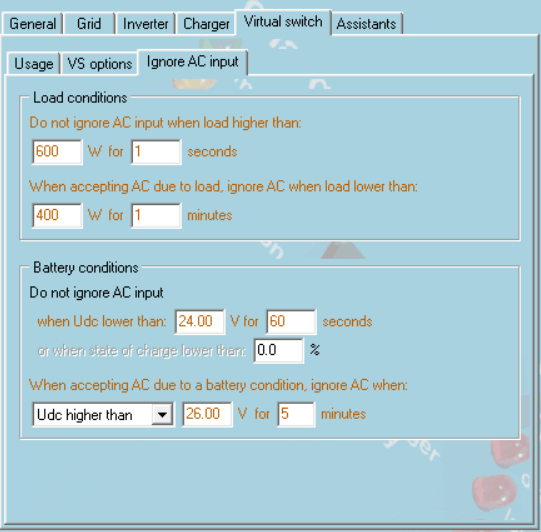So I got the multiplus hooked up for test. The AC side is not "installed", just a standard plug into a household socket and a single 3 pin test socket. Asides one or two tests of the inverter with the known limitations of no earth reference when in "Invertor Only" or if there is a grid fault, it won't be in "use" until the spark comes to do the AC side and install a ground rod. I also tested the charger.
So I have the inverter/charger itself working fine. I have the a RPI with Venus on it as GX device connected with a MK3 USB to the Multiplus. I
I also figured out the VRM remote config proceedure so have super user access to the Multiplus.
I also got MQTT working, although I would rather it connected to my broker and not make a local one.
What I want to look at next is configuring (or controlling) the Multiplus such that the grid is used as a "last resort", but otherwise continue to provide a "protected" circuit.
I would like:
Normal operation: Invert from battery to supply AC loads.
If AC loads exceeds the inverter capacity, add grid power.
If the DC voltage falls too low, feed AC loads with pass through. Ideally enable the charger at that point (optional) to support the DC loads also.
I can do this manually right now, but that isn't ideal.
I have considered DIY digital control mechanisms, maybe via MQTT, such that I can monitor the system and send controls to it when thresholds are reached.
I thought I'd ask, as the ESS eco-system in Victron exists, but I'm finding researching it a bit difficult. Obviously the vast majority of multiplus users consider the AC-In to be shore power.
Another option, I stumbled on, but not sure about, is to tell the Multiplus that AC-In is in fact a generator and should only be started when the DC is low. Is this a thing? Is it worth going that way?
Links to specific guides on ESS and "Favour solar, favour DC, AC-In only if strictly needed." would be helpful.
Cheers!

